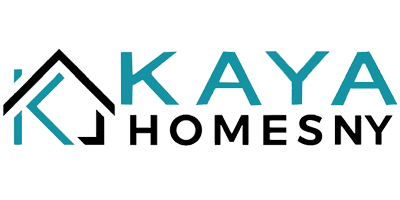The Long Island housing market has been a thing of extreme interest and speculation for quite some time, but in 2024, we are trying to work our way through an in-depth economic landscape. In any case, obtaining a clear view of the current market dynamics and future predictions is of great significance while buying or selling a house in Long Island.
This is because recent years have seen unprecedented price increases, and many potential buyers are anxiously waiting to catch a glimpse of some relief in the market. Therefore, this comprehensive analysis will deeply look at those factors driving the prices of houses on Long Island, explore expert predictions, and provide salient insights into how both buyers and sellers can position themselves in this dynamic market.
Current Market Landscape: A Closer Look
Long Island’s existing housing market has been challenging, yet at the same time, opportunistic. Heading into 2024, median home prices have reached record levels, with Nassau County properties commanding a premium price well over $720,000, while Suffolk County homes hovered in the vicinity of $595,000. These figures had already shown major jumps from pre-pandemic levels, representative not of a bit of inflation but of fundamental changes in how people view suburban living.
This is in relation to the continuous rise in prices that has made the process of buying or selling a house at Long Island rather intricate. It is a seller’s market, as homes listed in attractive neighborhoods attract multiple bids in a matter of days. Competition has also characterized the manner in which business is transacted in real estate at Long Island, more so in regions where infrastructural amenities are nearby and are accessible to New York City with ease.
Understanding Supply and Demand Dynamics
A huge imbalance in supply and demand has served as the underlying factor driving the Long Island housing market. The inventories are now at the lowest on record, about 40% below the pre-pandemic time levels. This is not a short-term fluctuation in supply but reflects more deep-seated structural problems of the market.
One major contributor to this deficiency is the reluctance to sell by existing owners. Many current homebuyers have locked in historically low mortgage rates, creating what the experts term the “golden handcuffs” effect. The thought of selling and buying another house at today’s interest rates has kept many would-be sellers in place, further squeezing available inventories.
The Interest Rate Factor
The mortgage rate environment has emerged as a crucial factor shaping market dynamics. Although rates have gained meaningfully from their historic lows, their challenge to the market has been more nuanced than expected. While higher rates took some of the affordability away, especially for first-time homebuyers, they have not lowered demand enough to push prices down considerably.
For those seeking to buy or sell a house on Long Island, there is perhaps one thing even more important to understand: the relationship between interest rates and housing prices. A lot of buyers are still in the market, driven either by necessity, investment opportunities, or wanting to put roots into one of the highly desirable communities here.
Economic Indicators and Market Health
The strong economic base has been propping up the housing prices in Long Island. Its diverse job base of technology and healthcare, the biggest growth sectors within the region, tend to have very stable and higher-paying jobs that are needed to keep demand for housing going.
Local economic indicators remain strong, with unemployment below the average and steady job creation in key sectors. Stability has helped maintain confidence within the housing market, even with national economic concerns persistent.
Demographic Shifts and Changing Preferences
The pandemic has changed the needs of housing. Capabilities for remote work have increased buying potential in areas on Long Island which were previously considered too far from Manhattan. Communities in Suffolk County, especially, are affected by this, with lots being larger and neighbors farther apart-an attractive feature to buyers.
Young families with kids continue to be the drivers of demand, simply because of the beautiful parks, educational institutes, and family-friendly communities out on Long Island. In turn, this creates movement in the market as empty nesters seek to sell and downsize, while many stay on Long Island and become part of the competitive buyer pool.
Predictions for Price Movements
While many would-be buyers may be hoping for the bottom to fall out of the market, most pros think any decline will be gradual, not dramatic. The unique nature of Long Island’s housing market-limited buildable land, nearby amenities, proximity to NYC-provides a floor for property values that’s unlikely to see substantial erosion.
While market indicators may have started to point in the direction of balanced conditions, this will continue to be a slow process over time rather than an immediate downward price plunge. If you are looking to buy or sell a house in Long Island, you must know how this gradual effect works in market change for informed decisions.
Regional Variations and Opportunities
Not every area in Long Island is experiencing identical market conditions. While general trends seem to indicate that prices are still high, there are some opportunities out of certain submarkets. These usually emanate from communities in revitalization, those areas with new transit-oriented development taking place, and neighborhoods that are experiencing turnovers between generations.
Being able to perceive the dynamics of these micro-markets is a matter of concern for both buyers and sellers. After all, local factors such as proximity to transport infrastructure or local developments determine the values and price trends of each property separately.
Strategies for Success in Today’s Market
The only way to navigate a successful strategy through the Long Island housing market is with a thoughtful approach. A buyer should be in good financial shape to take advantage of the local market conditions, while working with seasoned professionals who understand the nuances of specific communities. Equally, for sellers, proper pricing, timing, and presentation remain crucial factors in maximizing any return on investment.
Technology has certainly broadened its role in real estate, and virtual tours, digital documentation, as well as online research tools, have surely become a necessity in the course of buying and selling a house. It is important to understand and utilize these kinds of tools to gain advantages over a competitive market.
Looking Ahead: Market Indicators to Watch
A few key factors will determine the direction of future price movements in Long Island’s housing market. Again, in 2024, interest rates shape buying and selling decisions since rising rates cut buyer purchasing power by about 10% per percentage increase; thus, Federal Reserve updates become very important to track for affordability.
Housing demand is disproportionately linked to economic growth, particularly in the healthcare, technology, and education sectors, with new biotech and tech hubs that ram pressure on property values. Development projects like upgrades to LIRR stations and downtown revitalizations have massive influences on local property values, opening up new opportunities for appreciation.
These are population trends that include migration from New York City, plus the aging of the population, all translating into demand for and pricing of houses based on preferences for certain house types in submarkets. Changes in local zoning have impacts on the supply and prices of housing; recent pushes for affordable housing and upzoning in parts of the city could change neighborhood characteristics.
Environmental conditions, like those of flood zone designations or coastal protections, do have an effect on property values and insurance in sensitive areas. At the same time, technological innovations in fields like virtual touring and online marketing could reshape property transactions and perhaps alter the speed at which prices adjust.
While international investment patterns and economic stability are also important and influential, at the second order, global economic conditions are a factor in that supply constraints do indeed bear on the new supply of housing, while construction costs impact renovation costs and thus new construction prices and existing home values.
Finally, consumer confidence usually shows the way in market direction, while tracking the sentiment surveys and market activity reports gives a substantial glimpse into what time to buy or sell in Long Island.
Conclusion
The concerns about whether and when Long Island house prices will fall are not simple to answer. While some price growth moderation is possible, the underlying strengths of the market indicate that significant price declines in the near future are unlikely. Success for prospective buyers and sellers desiring to either buy or sell a house in Long Island depends largely on the need for them to know their local market dynamics and be prepared to move when opportunities arise, rather than trying to time the market perfectly.
Instead, prospective buyers should prepare themselves for a purchase based on personal readiness through financial preparedness, lifestyle needs, and long-term goals rather than waiting for the bottom to fall out of prices. Sellers have to capture that the market is strong, but appropriate pricing and presentation remain very crucial for successful transactions.
In 2024, the Long Island housing market continues to display resilience and stability, anchored on strong fundamentals and sustained demand. While challenges persist, especially in affordability and inventory levels, the market indeed continues to yield opportunities for prepared buyers and sellers who understand how it works differently from others.
Frequently Asked Questions
- When is the best time to buy a house on Long Island?
While there is a seasonal pattern, with winter months offering less competition and potentially better deals, the best time to buy truly has to do more with one’s personal readiness and market opportunities than trying to time the market perfectly. Consider things like interest rates, inventory levels, and your personal financial situation.
- Will house prices crash on Long Island?
A sharp crash is unlikely, with market fundamentals very strong, such as limited supply, cautious lending standards, and continued demand. Some moderation or slight declines in prices could happen in some areas, though, as the market adjusts to shifting economic conditions and a higher-interest-rate environment.
- How much down payment do I need for a Long Island house?
Down payments vary depending on loan type and property price. While most conventional loans require 20% down, some FHA loans can settle with as low as 3.5%. However, in the competitive market of Long Island, larger down payments often strengthen offers and may be necessary for you to be able to compete effectively.
- Should I wait for prices to drop before buying a house?
Rather than trying to time the market perfectly, focus on your personal readiness to buy, including financial stability, job security, and long-term housing needs. While there could be some moderation of prices, chances are that waiting for drastic drops may result in lost opportunities within this current market.










 by Mottek Group
by Mottek Group